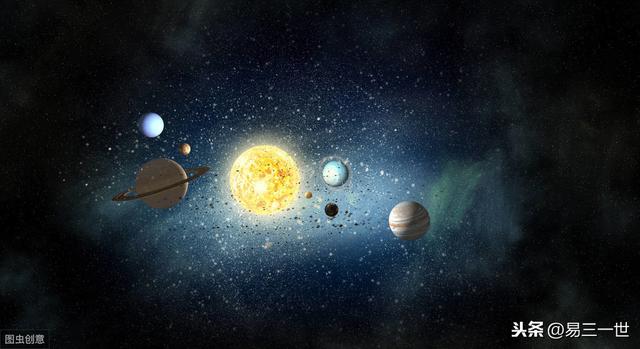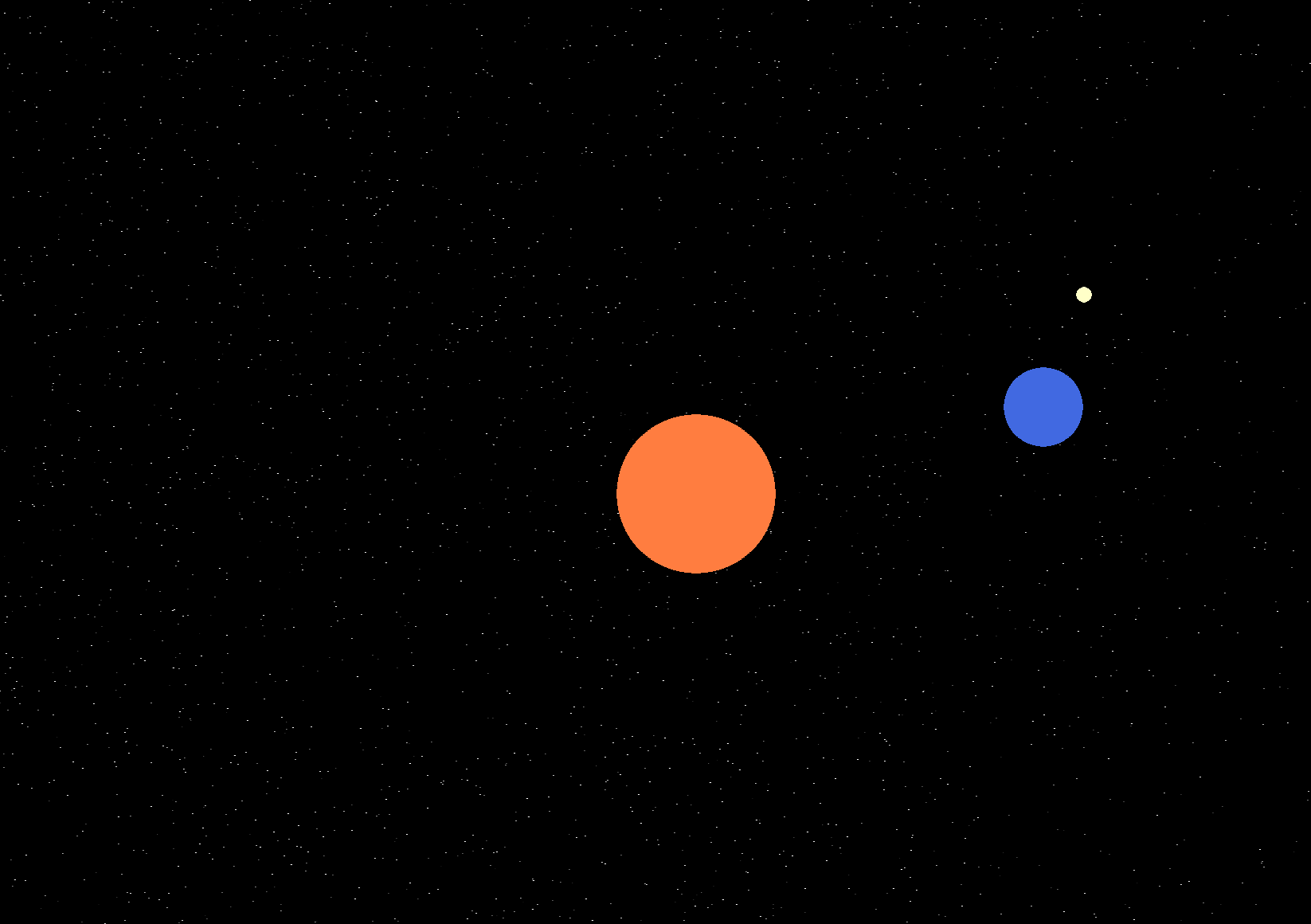热门标签
热门文章
- 1梯度下降法算法比较和进一步优化_梯度下降法优化
- 2AI各类网络模型的主要功能_ai分类网络
- 3Python基于内存缓存简单实现_from cache import memory_cache
- 4机器学习算法基础:所有实例代码_机器学习行业 代码实例
- 5qt5.12.10 在linux(国产系统)的源码编译、移植问题记录_qt-everywhere-src-5.12.10.tar.xz
- 6BeautifulSoup4 模块中文文档_beautifulsoup中文文档
- 7作业三:软件项目过程模型与规划_用统一过程模型简单设计一个具体软件项目
- 8人工智能开源项目_ai音响开源代码下载
- 9python基础—正则表达式_python pattern
- 10Linux与人工智能的划时代性“交汇”_14.linux操作系统在人工智能中的作用
当前位置: article > 正文
太阳花绘制代码_python的pygame的3d星空和太阳-地球-月亮的模拟运动代码即分析...
作者:weixin_40725706 | 2024-02-29 18:08:38
赞
踩
matplotlib画宇宙
1.说明:
1.1 推荐指数:★★★★★
1.2 理由:上次matplotlib制作太阳-地球-月亮模拟大家很喜欢,这次比上次高级一些,加入3d星空运动,还可以加入背景音乐,所以推荐指数5个星。
1.3 利用python的相关知识和pygame的动画设计,逐步代码分析,最后有简洁的完整代码。慢慢看,一看就会,通俗易懂。
1.4 推荐:python3(python3.8)、pygame和微软vscode编辑器。
1.5 我们生活在宇宙中,人类是很渺小,病毒才是人类的共同敌人。好好热爱生活,注意身体,爱护和珍惜身边的人,为祖国目前已经战胜疫情而骄傲,也祝世界其他国家早日战胜疫情。最后继续听从终南山、李兰娟、张文宏等教授的建议,做好防护,防止输入性疫情复发,人人有责。
1.6 有点长,慢慢品读,适合收藏和转发,谢谢大家喜欢。

人类很渺小,宇宙很美
2.本次高级一点点的效果图:

3.代码分析和注释:
3.1 第1步:
#---第1步---导出模块---import pygamefrom pygame.locals import*from sys import exitfrom random import randintimport math3.2 第2步:
#---第2步---pygame初始化,窗口大小和标题设置pygame.init() pygame.display.set_caption("太阳-地球-月亮模拟3d星空")#这个是打开的窗口的大小width,height = 1800,1400 #设置屏幕分辨率screen = pygame.display.set_mode((width,height),0,32) #屏幕挂起3.3 第3步:
#---第3步---相关定义---#颜色定义,颜色可以的单独定义,在pygame中颜色定义可以使如下#列表法、元组法、直接法,还有引入rgb法,就是不能十六进制法white = (255,255,255)black=0,0,0planse=[65,105,225]#定义x和y的屏幕坐标,用于地球和月球的位置设置screenCenterx = width//2 -1screenCentery = height//2 -1#设置背景音效---可要可不要,自己弄一个音乐,放在根目录下或者指定位置引出即可pygame.mixer.music.load("123.mp3")pygame.mixer.music.play(-1,0.0)3.4 第4步:
#---第4步---星星类的初始化定义---class Star(object): #类 def __init__(self,x,y,speed): #定义坐标和速度 self.x = x self.y = y self.speed = speed3.5 第5步:
#---第5步---三大星球定义:sun,earth,moon---class Ball(): #球的半径,颜色和每次转的角速度 def __init__(self,r,color,speed): self.image = pygame.Surface((2*r,2*r)) pygame.draw.circle(self.image,color,(r,r),r) self.image.set_colorkey((0,0,0)) self.rect = self.image.get_rect() self.speed= speed self.angle = 0 #绕着x,y点以radius为半径旋转 def move(self,x,y,radius): #乘以多少1~5,那么地球离太阳的距离就远些,相应的月球离地球也远些,3比较合适 self.rect.centerx = int(x + radius * math.cos(math.radians(self.angle))*3) self.rect.centery = int(y + radius * math.sin(math.radians(self.angle))*3) self.angle = self.angle + self.speed #定义画图函数 def draw(self): screen.blit(self.image,self.rect)===========================================
第6步:请注意,两种方法,简单游戏不需要name和main
===========================================
3.6 第6步:
#---第6步---运行定义#def run(): #这是注释掉def run的代码,整体向左移动一格#地球和月亮的球颜色和大小的设置#65,105,225=品蓝色;0,0,255=蓝色#50是地球大小,10是月球大小#1和5是对应的速度#earth = Ball(50,(65,105,225),1) #两种颜色法,故意注释掉earth = Ball(50,planse,1)moon = Ball(10,(255,255,200),5)#画星星,随机按x和y的大小生成,存入stars的列表中stars=[]for n in range(2000): #在第一帧画上一些星星 #x和y不但是坐标,还是画布大小的设置 #初始化生成的星星个数2000,可自己调节 x = float(randint(0,width)) y = float(randint(0,height)) speed = float(randint(10,300)) stars.append(Star(x,y,speed))clock = pygame.time.Clock() #Clock对象#while循环while True: #退出设置,建议固定 for event in pygame.event.get(): if event.type == QUIT: #return exit() #在循环启动后仍能随机生成小星星,不要的画也可以,就是不能继续生成从右到左的后续小星星 y = float(randint(0,height)) x = float(randint(0,width)) speed = float(randint(10,300)) star = Star(x,y,speed) stars.append(star) time_passed = clock.tick() time_passed_seconds = time_passed/1000 #单位毫秒,需转换 #屏幕背景颜色 #screen.fill((0,0,0)) screen.fill(black) for star in stars: #绘制所有星星 new_x = star.x - time_passed_seconds*star.speed #画星星 pygame.draw.aaline(screen,white,(new_x,star.y),(star.x+1,star.y)) star.x = new_x #画个太阳在中间,255,125,64=肉色,大小100 pygame.draw.circle(screen,(255,125,64),(screenCenterx,screenCentery),100) #150是地球与太阳的距离,也是半径 earth.move(screenCenterx,screenCentery,150) earth.draw() #50是月球与地球的距离,也是半径 moon.move(earth.rect.centerx,earth.rect.centery,50) moon.draw() #pygame.display.flip() #可要可不要,由于双缓冲的原因,需要将整个display的surface对象更新到屏幕上去 #刷新速度,60~600,数值越大刷新越快,速度也越快 clock.tick(60) #屏幕更新,必须要,否则无画面 pygame.display.update()#---单文件可要可不要,但是也是有道理的,我以前讲过# 如果不要,注释掉,那么def run就可以删除,其下面的代码块整体向左相应的定格试试 #这是注释掉def run的代码#if __name__ == "__main__": #run()- 简单动画或游戏,是不需要用if __name__ == "__main__":,但是推荐使用,我为了讲解代码的区别和分析采用去掉的,而且简单动画或游戏没关系,复杂一点的或者大型动画或游戏,是需要的。
- 简洁的完整代码如下:
import pygamefrom pygame.locals import*from sys import exitfrom random import randintimport mathpygame.init() pygame.display.set_caption("太阳-地球-月亮模拟3d星空")width,height = 1800,1400 #设置屏幕分辨率screen = pygame.display.set_mode((width,height),0,32) #屏幕挂起white = (255,255,255)black=0,0,0planse=[65,105,225]screenCenterx = width//2 -1screenCentery = height//2 -1pygame.mixer.music.load("123.mp3")pygame.mixer.music.play(-1,0.0)class Star(object): #类 def __init__(self,x,y,speed): #定义坐标和速度 self.x = x self.y = y self.speed = speedclass Ball(): #球的半径,颜色和每次转的角速度 def __init__(self,r,color,speed): self.image = pygame.Surface((2*r,2*r)) pygame.draw.circle(self.image,color,(r,r),r) self.image.set_colorkey((0,0,0)) self.rect = self.image.get_rect() self.speed= speed self.angle = 0 #绕着x,y点以radius为半径旋转 def move(self,x,y,radius): #乘以多少1~5,那么地球离太阳的距离就远些,相应的月球离地球也远些,3比较合适 self.rect.centerx = int(x + radius * math.cos(math.radians(self.angle))*3) self.rect.centery = int(y + radius * math.sin(math.radians(self.angle))*3) self.angle = self.angle + self.speed #定义画图函数 def draw(self): screen.blit(self.image,self.rect)earth = Ball(50,planse,1)moon = Ball(10,(255,255,200),5)#画星星,随机按x和y的大小生成,存入stars的列表中stars=[]for n in range(2000): #在第一帧画上一些星星 #x和y不但是坐标,还是画布大小的设置 #初始化生成的星星个数2000,可自己调节 x = float(randint(0,width)) y = float(randint(0,height)) speed = float(randint(10,300)) stars.append(Star(x,y,speed))clock = pygame.time.Clock() #Clock对象#while循环while True: #退出设置,建议固定 for event in pygame.event.get(): if event.type == QUIT: #return exit() #在循环启动后仍能随机生成小星星,不要的画也可以,就是不能继续生成从右到左的后续小星星 y = float(randint(0,height)) x = float(randint(0,width)) speed = float(randint(10,300)) star = Star(x,y,speed) stars.append(star) time_passed = clock.tick() time_passed_seconds = time_passed/1000 #单位毫秒,需转换 #屏幕背景颜色 #screen.fill((0,0,0)) screen.fill(black) for star in stars: #绘制所有星星 new_x = star.x - time_passed_seconds*star.speed #画星星 pygame.draw.aaline(screen,white,(new_x,star.y),(star.x+1,star.y)) star.x = new_x #画个太阳在中间,255,125,64=肉色,大小100 pygame.draw.circle(screen,(255,125,64),(screenCenterx,screenCentery),100) #150是地球与太阳的距离,也是半径 earth.move(screenCenterx,screenCentery,150) earth.draw() #50是月球与地球的距离,也是半径 moon.move(earth.rect.centerx,earth.rect.centery,50) moon.draw() clock.tick(60) #屏幕更新,必须要,否则无画面 pygame.display.update()声明:本文内容由网友自发贡献,不代表【wpsshop博客】立场,版权归原作者所有,本站不承担相应法律责任。如您发现有侵权的内容,请联系我们。转载请注明出处:https://www.wpsshop.cn/w/weixin_40725706/article/detail/167368
推荐阅读
相关标签


